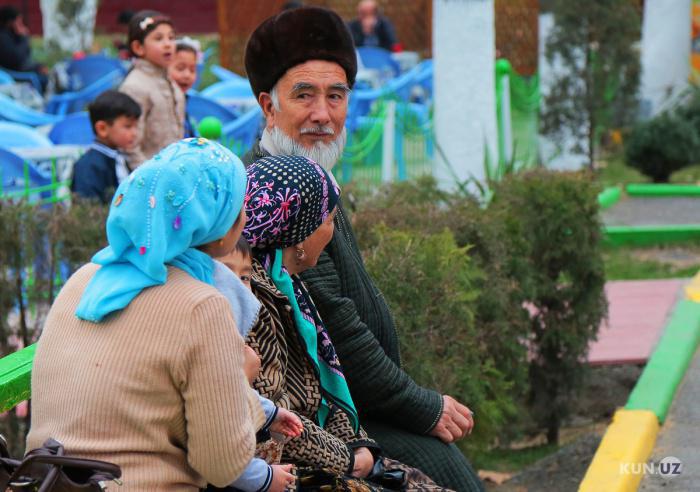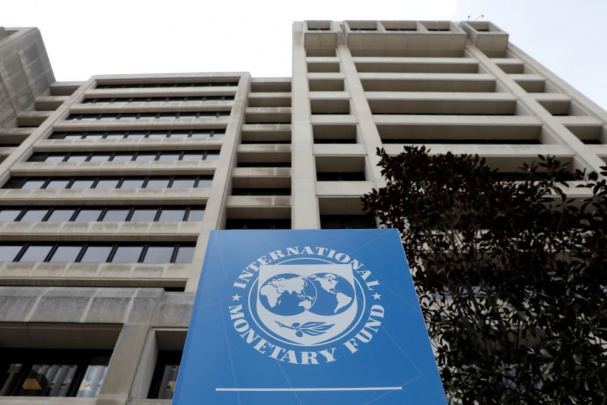Population aging expected to accelerate in Uzbekistan
In accordance with the forecast, the population of Uzbekistan will grow dynamically in the next three decades. With the highest probability, by 2028 the population of the republic will number 40 million inhabitants, and by 2050, it is expected that the figure will cross the mark of 50 million people.

Photo: Kun.uz
This became known during the "round table", which was devoted to the discussion of "Forecasts of the demographic development of the Republic of Uzbekistan and its regions for the period up to 2050 and the results of a sample survey to study fertility factors". The event is organized by the Statistical Agency and the United Nations Population Fund (UNFPA).
In accordance with the forecast, the population of Uzbekistan will grow dynamically in the next three decades. With the highest probability, by 2028 the population of Uzbekistan will number 40 million inhabitants, and by 2050 it is expected that the figure will cross the mark of 50 million people.
At the same time, natural growth will be a decisive component of population reproduction throughout the forecast period. Along with high dynamics of population growth, there will also be profound changes in all age structures, and the rate of population aging is expected to accelerate.
The Deputy Director of the Agency for Statistics, emphasizing the importance of the presented forecast, said that the annual natural increase in the population of Uzbekistan increased by 760 thousand people. He noted that Uzbekistan ranks first among the CIS countries in terms of birth rate and 57% of the population is of working age, 32% is younger than working age and 11% are elderly people.
It also became known that today, on average, more than 600,000 people enter the labor market of the republic every year. Currently, life expectancy is 74.3 years, of which 76.6 years for women and 72.1 years for men. During the years of independence, this figure increased to 7.9 years.
During the event, experts also presented the results of a sample survey on the study of fertility factors in the country, conducted by the Institute of Family and Women with broad technical support from Charles University in the Czech Republic.
The study provided important information on the factors affecting fertility rates and reproductive behavior of women in Uzbekistan. According to the results of the survey, the improvement in the financial situation of families with children and a general increase in the level of people's confidence in the future can be considered as the main factors in the growth of the birth rate after 2017 in Uzbekistan.
“All the assumptions formulated served as the basis for estimating the parameters of the classical cohort-component projection model, a widely used population forecasting method,” the conclusion says.
Recommended
List of streets and intersections being repaired in Tashkent published
SOCIETY | 19:12 / 16.05.2024
Uzbekistan's flag flies high on Oceania's tallest volcano
SOCIETY | 17:54 / 15.05.2024
New tariffs to be introduced in Tashkent public transport
SOCIETY | 14:55 / 05.05.2023
Onix and Tracker cars withdrawn from sale
BUSINESS | 10:20 / 05.05.2023
Latest news
-
Uzbekistan tops medal table at Asian Cadet Judo Cup in Kazakhstan
SPORT | 18:42 / 05.07.2025
-
Uncertainty grows as new homes remain without gas supply
SOCIETY | 17:46 / 05.07.2025
-
Uzbekistan plans to launch national ferry service in Caspian Sea
SOCIETY | 16:03 / 05.07.2025
-
Dozens of violations, zero accountability: Fergana police cancel fines for chief’s wife’s car
SOCIETY | 16:02 / 05.07.2025
Related News

13:53 / 11.10.2023
IMF says Uzbekistan is ahead of Kazakhstan, Kyrgyzstan and Turkmenistan in terms of economic growth

16:05 / 21.08.2023
Uzbekneftegaz anticipates slight slowdown in gas production in 2023

13:53 / 07.06.2023
WB: Uzbekistan can maintain rapid economic growth

18:38 / 16.05.2023



